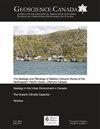Economic Geology Models 5. Specialty, Critical, Battery, Magnet and Photovoltaic Materials: Market Facts, Projections and Implications for Exploration and Development
IF 0.8
4区 地球科学
Q3 GEOSCIENCES, MULTIDISCIPLINARY
引用次数: 8
Abstract
Many exploration companies are now focusing on specialty materials that are associated with so-called ‘green technology’. These include ‘battery materials’, ‘magnet materials’ and ‘photovoltaic materials’, and many such commodities are also broadly labelled as ‘critical materials’ because they are seen as vital for industrial development, societal needs or national security. The definitions used for such materials are not always consistent among jurisdictions or across industry, and this paper attempts to clarify the criteria and address some common misconceptions. The distinction between major minerals (e.g. base metals) and ‘specialty materials’ (i.e. those mined or produced in much smaller amounts) is particularly important. The markets for many specialty materials are growing faster than those for traditional ferrous, precious and base metals and they are often portrayed as excellent long-term investment opportunities. However, the small market bases for specialty materials and considerable uncertainty around growth projections (especially related to material substitutions and rapid technological change) need to be taken into consideration for objective assessment of the development potential of any proposed project, establishment of new supply chains by major corporations, and responsible decision-making (mineral policy) by government. In the short-term, projects aimed at specialty materials (materials with a small market base) cannot benefit from economy of scale, and their development hinges on commercially proven metallurgical processes, unless they are supported by governments or end-users. Several specialty metals (e.g. germanium, indium, cadmium, and cobalt) are commonly obtained as by-product of base metal extraction. In such cases, systematic testing of base metal ores for their specialty metal content may justify the addition of relevant recovery circuits to existing smelters. If positive results are obtained, the need for targeting new sources of such specialty metals as primary exploration targets may be reduced or eliminated. Where market conditions permit and concerns about the future availability of materials seem reliable, grass-roots exploration for specialty materials is warranted, and pre-competitive government involvement may be justified to promote such development efforts.经济地质模型特种,关键,电池,磁铁和光伏材料:市场事实,预测和勘探开发的启示
许多勘探公司现在都专注于与所谓的“绿色技术”相关的特种材料。这些包括“电池材料”、“磁铁材料”和“光伏材料”,许多这类商品也被广泛地标记为“关键材料”,因为它们被视为对工业发展、社会需求或国家安全至关重要。这些材料的定义在不同的司法管辖区或行业之间并不总是一致的,本文试图澄清这些标准并解决一些常见的误解。区分主要矿物(如贱金属)和“特殊材料”(即开采或生产的数量少得多的材料)尤为重要。许多特种材料市场的增长速度超过了传统的黑色金属、贵金属和贱金属市场,它们经常被描绘成极好的长期投资机会。然而,在客观评估任何拟议项目的发展潜力、大公司建立新的供应链和政府负责任的决策(矿物政策)时,需要考虑到特种材料的小市场基础和围绕增长预测的相当大的不确定性(特别是与材料替代和快速技术变革有关)。在短期内,以特殊材料(市场基础小的材料)为目标的项目不能从规模经济中受益,除非得到政府或最终用户的支持,否则它们的发展取决于经商业验证的冶金工艺。几种特殊金属(如锗、铟、镉和钴)通常作为贱金属提取的副产品获得。在这种情况下,系统地测试贱金属矿的特殊金属含量,可能证明在现有冶炼厂中增加有关的回收电路是合理的。如果取得积极的结果,就可以减少或消除将特种金属的新来源作为主要勘探目标的需要。如果市场条件允许,并且对材料未来供应的关注似乎是可靠的,则有必要对特种材料进行基层探索,并且在竞争前政府的参与可能是合理的,以促进这种发展努力。
本文章由计算机程序翻译,如有差异,请以英文原文为准。
求助全文
约1分钟内获得全文
求助全文
来源期刊

Geoscience Canada
地学-地球科学综合
CiteScore
3.30
自引率
0.00%
发文量
9
审稿时长
>12 weeks
期刊介绍:
Established in 1974, Geoscience Canada is the main technical publication of the Geological Association of Canada (GAC). We are a quarterly journal that emphasizes diversity of material, and also the presentation of informative technical articles that can be understood not only by specialist research workers, but by non-specialists in other branches of the Earth Sciences. We aim to be a journal that you want to read, and which will leave you better informed, rather than more confused.
 求助内容:
求助内容: 应助结果提醒方式:
应助结果提醒方式:


